Oxyresveratrol attenuates bone resorption by inhibiting the mitogen-activated protein kinase pathway in ovariectomized rats
- PMID: 38243227
- PMCID: PMC10799353
- DOI: 10.1186/s12986-024-00781-4
Oxyresveratrol attenuates bone resorption by inhibiting the mitogen-activated protein kinase pathway in ovariectomized rats
Abstract
Background: Bone is continuously produced by osteoblasts and resorbed by osteoclasts to maintain homeostasis. Impaired bone resorption by osteoclasts causes bone diseases such as osteoporosis and arthritis. Most pharmacological treatment of osteoporosis focuses on inhibiting osteoclast differentiation, often to restore osteoclast/osteoclast balance. However, recent osteoporosis treatments have various side effects. According to a recent study, resveratrol, known as a stilbenoid family, is known to increase bone density, and the osteoclast inhibitory effect was confirmed using oxyresveratrol, a stilbenoid family. Here, we investigated the effect of oxyresveratrol on osteoclast differentiation and an ovariectomized mouse model.
Methods: Mouse leukemia monocyte/macrophage cell line RAW 264.7 was treated with oxyresveratrol, and cell cytotoxicity was confirmed by measuring MTT assay. Tartrate-resistant acid phosphatase (TRAP), an enzyme marker for osteoclasts, was confirmed by staining. In addition, osteoclast differentiation markers and MAPK-related markers were confirmed at the mRNA level and protein expression. The effect of oxyresveratrol was confirmed using ovariectomized mice. Deoxypyridinoline (DPD) was measured using mouse urine and TRAP activity was observed using serum. Bone mineral density was also measured using Micro-CT.
Results: The polyphenol oxyresveratrol inhibited receptor activator of nuclear factor kappa-Β ligand (RANKL)-induced osteoclast differentiation of RAW 264.7 cells. Furthermore, oxyresveratrol inhibited TRAP activity and actin-ring formation. Moreover, oxyresveratrol suppressed the phosphorylation of the RANKL-induced mitogen-activated protein kinases (MAPKs) p38, JNK, and ERK and significantly reduced the expression of bone differentiation markers (NFATc1, cathepsin K, and TRAP).
Conclusion: Oxyresveratrol inhibits osteoclast differentiation via MAPK and increases bone density in ovariectomized rats, suggesting it has therapeutic potential for bone diseases such as osteoporosis. We confirmed the osteoporosis prevention effect of OR in Raw 264.7 cells, and future studies should confirm the effect of OR using rat bone marrow-derived cells.
Keywords: Mitogen-activated protein kinase; Osteoclast; Osteoporosis; Ovariectomized rat; Oxyresveratrol.
© 2024. The Author(s).
Conflict of interest statement
The authors declare no competing interest.
Figures
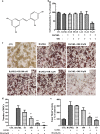
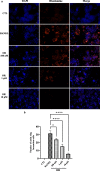
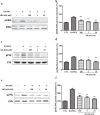
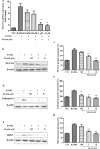

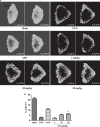
Similar articles
-
Glaucocalyxin A suppresses osteoclastogenesis induced by RANKL and osteoporosis induced by ovariectomy by inhibiting the NF-κB and Akt pathways.J Ethnopharmacol. 2021 Aug 10;276:114176. doi: 10.1016/j.jep.2021.114176. Epub 2021 Apr 30. J Ethnopharmacol. 2021. PMID: 33933570
-
Puerarin specifically disrupts osteoclast activation via blocking integrin-β3 Pyk2/Src/Cbl signaling pathway.J Orthop Translat. 2022 Feb 16;33:55-69. doi: 10.1016/j.jot.2022.01.003. eCollection 2022 Mar. J Orthop Translat. 2022. PMID: 35228997 Free PMC article.
-
Constant hypoxia inhibits osteoclast differentiation and bone resorption by regulating phosphorylation of JNK and IκBα.Inflamm Res. 2019 Feb;68(2):157-166. doi: 10.1007/s00011-018-1209-9. Epub 2019 Jan 2. Inflamm Res. 2019. PMID: 30604211
-
The role of lipid metabolism in osteoporosis: Clinical implication and cellular mechanism.Genes Dis. 2023 Sep 20;11(4):101122. doi: 10.1016/j.gendis.2023.101122. eCollection 2024 Jul. Genes Dis. 2023. PMID: 38523674 Free PMC article. Review.
-
Unearthing the Potential Therapeutic Effects of Oxyresveratrol Based on Intrinsic Links between Pharmacological Effects: Implications for the Gut-Liver-Brain Axis.Pharmaceuticals (Basel). 2024 Aug 13;17(8):1063. doi: 10.3390/ph17081063. Pharmaceuticals (Basel). 2024. PMID: 39204169 Free PMC article. Review.
Cited by
-
RNA interference-mediated osteoprotegerin silencing increases the receptor activator of nuclear factor-kappa B ligand/osteoprotegerin ratio and promotes osteoclastogenesis.World J Stem Cells. 2025 Apr 26;17(4):101290. doi: 10.4252/wjsc.v17.i4.101290. World J Stem Cells. 2025. PMID: 40308885 Free PMC article.
-
Parthenolide ameliorates glucocorticoid-induced inhibition of osteogenic differentiation and osteoporosis by activating ERK signaling pathway.J Orthop Surg Res. 2025 May 9;20(1):450. doi: 10.1186/s13018-025-05722-2. J Orthop Surg Res. 2025. PMID: 40346551 Free PMC article.
-
A Systematic Review on the Molecular Mechanisms of Resveratrol in Protecting Against Osteoporosis.Int J Mol Sci. 2025 Mar 22;26(7):2893. doi: 10.3390/ijms26072893. Int J Mol Sci. 2025. PMID: 40243497 Free PMC article.
References
Grants and funding
LinkOut - more resources
Full Text Sources
Research Materials
Miscellaneous

